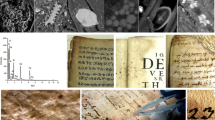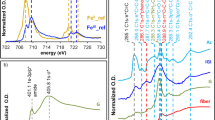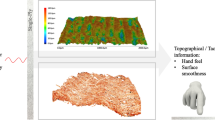Abstract
In order to render paper hydrophobic for ink and thus adequate for writing, gelatine has been largely used. To this day, it is still employed in conservation workshops as an adhesive or a sizing agent, for instance, during the treatment of iron gall ink manuscripts. Various types and concentrations of gelatine are recommended, depending on the desired effect, but little information is available regarding to the physical distribution of gelatine in the paper. This aspect is however determinant for a better control of conservation treatments.
In this work, we investigate the possibilities offered by FTIR microscopy for the measurement of the gelatine distribution in paper. Laboratory papers were preliminary treated with different types of gelatine and then embedded in a resin and cut in thin slices. Mapping techniques enable to compare the penetration of different types of gelatine in a semiquantitative way. The performance of conventional laboratory equipment and synchrotron radiation experimental setup are discussed.
Similar content being viewed by others
References
K. Garlick, Book Pap. Group Annu. 5, 94–107 (1986)
C.H. Stephens, T. Barrett, P.M. Whitmore, J.A. Wade, J. Mazurek, M. Schilling, J. Am. Inst. Conserv. 47, 201–215 (2008)
T. Barrett, P. Lang, J. Waterhouse, in International Conference on Conservation and Restoration of Archival and Library Materials, Erice, 22–29 April 1996, vol. 2 (1996), pp. 605–624
T. Barrett, C. Mosier, in The Institute of Paper Conservation Conference, Manchester, 1–4 April 1992 (1992), pp. 207–213
TAPPI, T 504 om-89, Tappi Test Methods (Technical Association of the Pulp and Paper Industry, Atlanta, 1991)
T. Barrett, C. Mosier, J. Am. Inst. Conserv. 34, 173–186 (1995)
J.F. Waterhouse, T.D. Barrett, Tappi J. 74, 207–212 (1991)
T.D. Barrett, Pap. Conserv. 13, 3–108 (1989)
A.-L. Dupont, J. Chromatogr. A 950, 113–124 (2002)
A.-L. Dupont, Gelatine Sizing and Its Impact on the Degradation of Cellulose During Ageing (University of Amsterdam, Amsterdam, 2003)
M. Missori, M. Righini, A.-L. Dupont, Opt. Commun. 263, 289–294 (2006)
T. Barrett, C. Mosier, Book Pap. Group Annu. 13, 5–8 (1994)
P. Spitzmueller, in The Institute of Paper Conservation Conference, Manchester, 1–4 April 1992 (1992), pp. 214–217
G. Kolbe, Restaurator 25, 26–39 (2004)
D.A. Prystupa, A.M. Donald, Polym. Gels Netw. 4, 87–110 (1996)
J.H. Muyonga, C.G.B. Cole, K.G. Duodu, Food Chem. 86, 325–332 (2004)
P. Calvini, A. Gorassini, Restaurator 23, 48–66 (2002)
Author information
Authors and Affiliations
Corresponding author
Rights and permissions
About this article
Cite this article
Rouchon, V., Pellizzi, E. & Janssens, K. FTIR techniques applied to the detection of gelatine in paper artifacts: from macroscopic to microscopic approach. Appl. Phys. A 100, 663–669 (2010). https://doi.org/10.1007/s00339-010-5649-5
Received:
Accepted:
Published:
Issue Date:
DOI: https://doi.org/10.1007/s00339-010-5649-5




